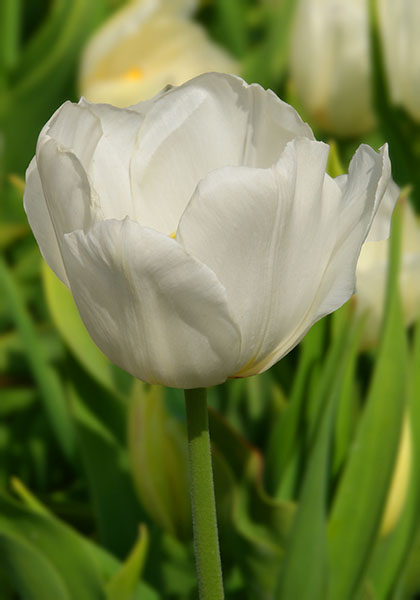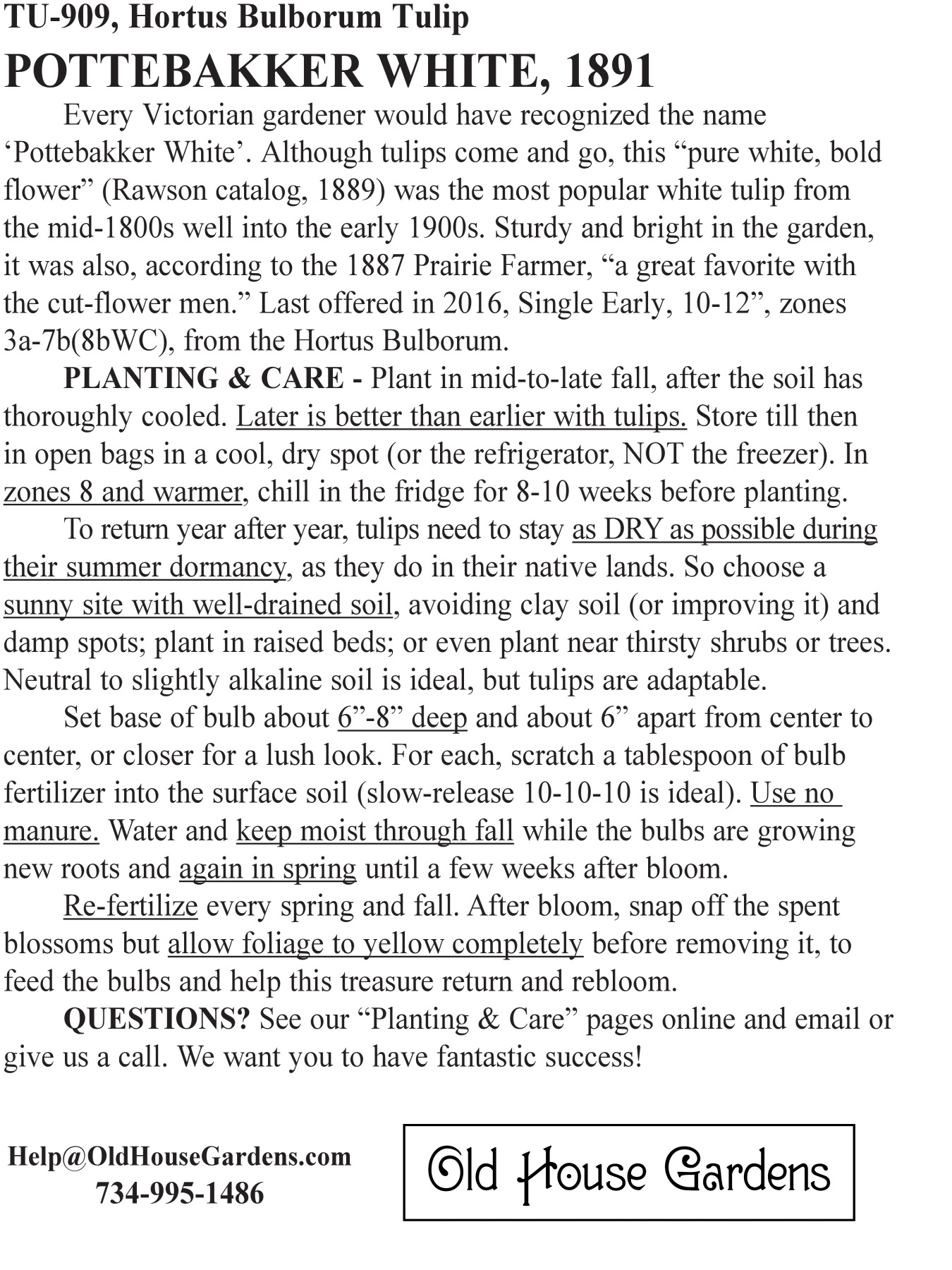|
|

  
|
|
Every Victorian gardener would have recognized the name ‘Pottebakker White’. Although tulips come and go, this “pure white, bold flower” (Rawson catalog, 1889) was the most popular white tulip from the mid-1800s well into the early 1900s. Sturdy and bright in the garden, it was also, according to the 1887 Prairie Farmer, “a great favorite with the cut-flower men.” Single Early, 10-12”, zones 3a-7b(8bWC), from the Hortus Bulborum. Last offered in 2016. ‘Pottebakker White’ is now commercially extinct. |
|
TYPE Single Early SUB TYPE Single Early ZONES 3a-7b(8bWC) HEIGHT 10-12” BLOOM SEASONS early spring SOURCE Hortus Bulborum LIGHT full sun |
PLANTING & CAREWell, almost. Though they have a reputation for being short-lived, we know of tulips that have been blooming beautifully for decades. Here’s how to get the most out of yours. For a start, you need to be in zone 7 or colder, or zone 8 or colder on the West Coast where winter temperatures stay cool longer. (Gardeners in warmer zones can grow tulips as annuals, but you’ll need to pre-cool or pre-chill them in the refrigerator for 8-12 weeks before planting.) Then most important, we’ve learned from experience, is keeping them DRY in SUMMER (as in their native homes). Try this: plant a few where you never water in summer — or near a thirsty shrub or tree — and see how well they return. Beyond that, the basics include well-drained soil (improve heavy soil, or try raised beds), lots of sun, regular fertilizing, and — this is very important —letting the foliage ripen to yellow to feed the bulbs for next year’s bloom. Some authorities recommend deep planting, especially in the South — to 12 inches — but we say 6-8 inches is plenty. Then there’s this age-old method: dig them up every summer, store them in a cool dry spot, and replant them in the fall. You’ll end up with more bulbs every year, guaranteed. Some varieties just last better, too — often Single Earlies, Single Lates, Lily-flowered tulips, and species. And there’s a good reason why OLD VARIETIES OFTEN PERENNIALIZE BETTER: they were bred for gardens, not for commercial pot-flower and cut-flower uses as most modern tulips have been. Tulips do best when planted in mid- to late fall, after the soil has thoroughly cooled. Later is better than earlier with tulips. If necessary, store in open bags in a cool, dry spot (or the refrigerator — NOT the freezer). Neutral to slightly alkaline soil is ideal, though tulips are very adaptable. Set bulbs about 6 inches apart from center to center (or closer for a lush look). For each, scratch a tablespoon of bulb fertilizer into the surface soil (slow-release 10-10-10 is ideal). Use no manure. Water well and make sure the bulbs have reliable moisture throughout their growing period, from planting in the fall through the ripening of their foliage the following summer. Learn more about growing and enjoying tulips at our Tulips Newsletter Archives and Bulbs as Cut-Flowers page. |

|
SPRING
|
· |
SUMMER
|
· |
FALL
|
· |
LEARN MORE
|
· |
ORDERING
|

|










